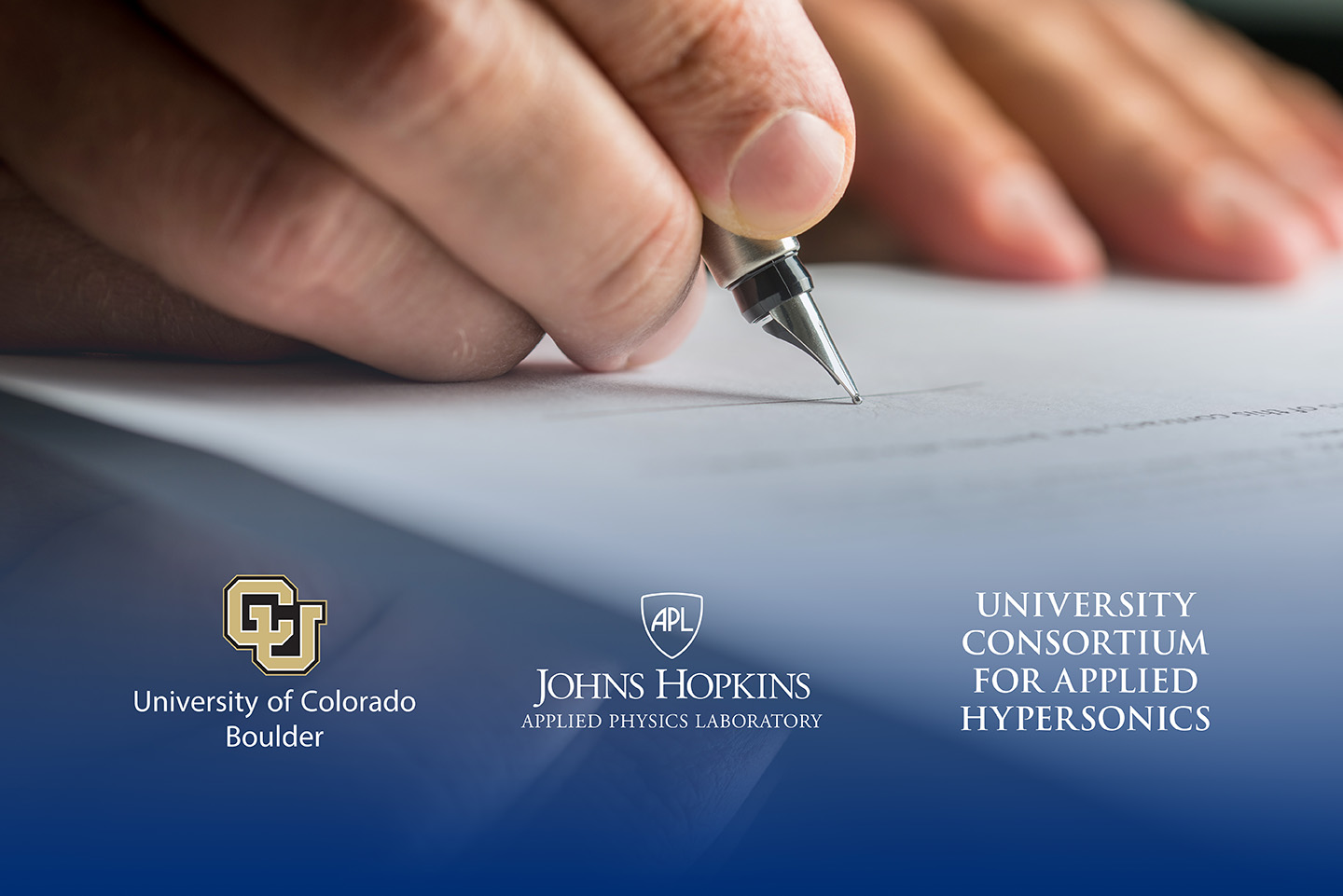News
Johns Hopkins APL, University of Colorado Boulder Ink Research Collaboration Partnership
Researchers from the Johns Hopkins Applied Physics Laboratory (APL) in Laurel, Maryland, and the University of Colorado Boulder (CU Boulder) are teaming up on a project to better understand and eventually predict wear and damage affecting thermal protection systems (TPSs).
The recently formalized partnership supports an independent research and development effort to track how damage evolves in a TPS, like those used on hypersonic vehicles and spacecraft, in extreme environments.
“We’re using computational modeling techniques to estimate the growth rate of a damaged TPS exposed to a hypersonic flow, intending to leverage the results to inform future test and evaluation activities to investigate TPS resiliency,” said Kerri Phillips, chief scientist in APL’s Air and Missile Defense Sector (AMDS). “Ultimately, this will inform future TPS studies and tests to build an understanding of how TPS damage evolves under various flight conditions.”
CU Boulder and APL are members of the University Consortium for Applied Hypersonics (UCAH), which AMDS has engaged in seeking meaningful partnerships. UCAH is a collaborative network of universities working with government, industry, national laboratories, federally funded research centers and university affiliated research centers to deliver the innovation and workforce needed to advance hypersonic flight systems supporting the national defense.
“This particular study will continue through the fiscal year, although we are looking to establish a long-term partnership with CU Boulder to investigate this type of phenomenon,” Phillips said. “Forming these strategic partnerships with universities gives APL another way to contribute to advancing science and technology, applying it to some of the questions we want to answer and accelerating technology transition to the warfighter.”
The first project milestone is for the CU Boulder team to run its software on a two-dimensional geometry with a damaged surface. APL will compare it to existing test results for validation.
“CU Boulder has a unique modeling and simulation capability that will enable us to simulate test cases that will inform future experiment designs,” said Phillips. “Iain Boyd and his team developed a technique that characterizes the coupled effects of hypersonic air flows and the ablative material response of a TPS.”
This effort’s core APL technical team is Yo-Rhin Rhim and Samuel Slingluff, the principal investigators, and Rob Patterson, the cognizant program manager who helped implement this partnership.
“Our goal is to establish a research partnership that evolves and allows us to work closely with CU Boulder in various technical areas,” Phillips said. “I hope this is the first of many successful ventures with our academic partners as we mature this partnership and conduct more critical experiments.”
